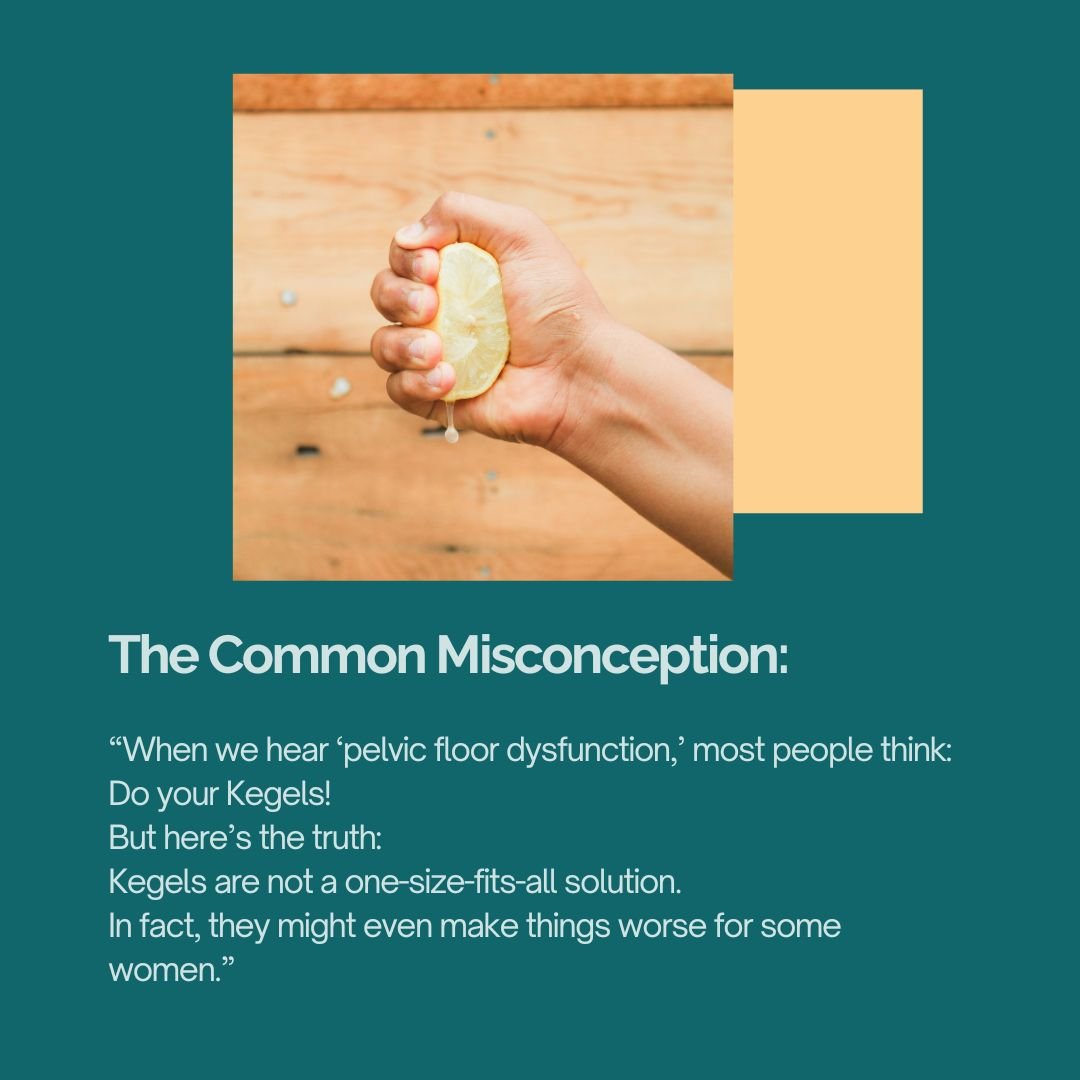
Insights
Pathways to Pain Relief: Insights and Resources for Your Journey
Bladder Inflammation, Vulvodynia, and the Power of Gentle Healing
The body has an incredible ability to heal, especially when we create the right environment.
Pain is not a sign of weakness — it’s a sign that the nervous system needs reassurance, safety, and time.
You don’t have to push through pain.
You don’t have to fight your body.
You can work with it, gently, compassionately, and patiently.
Even a few minutes a day of calming practices can begin to shift the cycle — from pain and guarding, toward softness and healing.
🦶 From Sole to Core: How Your Feet Influence Pelvic Floor Health
When people think about pelvic floor dysfunction, they often focus on what’s happening “down there.” But zoom out for a moment—and look down. Way down. The feet, our often-overlooked foundation, hold a powerful key to unlocking pelvic balance, nervous system regulation, and better breath mechanics.
Hiatal Hernia: Why It’s More Common Than You Think — and How Hypopressives Can Help
Experiencing reflux, breathlessness, or chest pressure? Hiatal hernias are becoming more common — and posture, breath, and fascia may be to blame. Discover how Hypopressives can relieve symptoms by decompressing the diaphragm, restoring fascial support, and reducing internal pressure. A holistic approach to healing from the inside out.
✨ The Hidden Cost of Shapewear: What It’s Doing to Your Pelvic Floor
We’ve been told that shapewear is a quick fix — smoothing the belly, lifting the bottom, holding everything “in place.” But at what cost?
As a pelvic floor specialist, I see behind the scenes — what’s happening inside the body when it’s tightly wrapped, compressed, and silenced by elasticized control. Spoiler alert: it’s not doing your pelvic health any favours.
Here’s what you need to know.
When the Ribs Won’t Let Go: Emotional Roots of Rib Cage Tension (And How to Release Them)
If your ribs feel stuck, it’s not a sign of failure—it’s a signal.
Your body isn’t broken.
It might just be asking for safety before mobility.
Support before stretch.
Listening before forcing.
✨ The Truth About Creams, Wands, and Magnetic Chairs: Why They’re Not the Long-Term Fix for Your Pelvic Floor
If you’re experiencing pelvic floor dysfunction, you’ve probably come across a long list of “solutions” that promise fast results.
💊 Creams.
🔮 Wands.
🪑 Magnetic chairs.
🧴 Gels.
And I get it—when you're leaking, prolapsing, dealing with vaginismus, or feeling like your insides are falling out, you want a fix. Yesterday.
We all wish there was a silver bullet—a magic click of the heels that could just make it all go away.
Slow Down: The Truth About Apnoea Practice and Pelvic Floor Health
There’s something that’s been bothering me lately, and I need to get it off my chest. Some clients are being told by PT trainers and physios that the goal is to do 30 apnoeas per session—as if hitting that magic number is the secret to pelvic floor perfection. It’s almost as if these practitioners just can’t quite let go of their Kegel fixation—count, squeeze, repeat.
But here’s the thing: That’s not how Hypopressives—or your pelvic floor—actually work.
Why Kegels May Not Be the Best Choice for Most Women with Pelvic Floor Dysfunction
Your pelvic floor isn’t meant to work in isolation—it’s part of a complex, coordinated team. It works alongside your diaphragm, deep core, hips, feet, and nervous system.
What your body really needs is a responsive pelvic floor:
One that contracts when needed, relaxes when it’s safe, and moves rhythmically with your breath and posture.
Kegels isolate the pelvic floor from this team. They often fail to restore true function—and can even create further imbalance.
Why Voice Projection Can Overload Your Pelvic Floor
Do’s and Don’ts for Voice & Pelvic Floor Health
✅ DO:
Practice exhaling while speaking rather than holding your breath and pushing.
Use diaphragmatic breath before and after long speaking or singing sessions to reset pressure.
Check your posture: Tall spine, soft knees, relaxed jaw. Alignment helps the canister function.
Incorporate voice and breath coordination drills (see below).
Use voice resonance (vibration in the chest or face) instead of pure force.
❌ DON’T:
Yell or speak forcefully while breath-holding.
Tuck your pelvis or lock your knees while speaking.
Push your belly out on inhale or clench your abs on exhale.
Ignore signs like pelvic heaviness or leaking—those are cues your system needs support.
Breathing: A Gateway to Brain Health and Resilience Against Neurological Diseases
Breathing is an automatic process we often take for granted, yet it holds profound influence over our brain's health and function. Emerging research reveals that conscious breathwork can impact brain structures like the amygdala, potentially offering protective benefits against age-related neurological diseases such as Parkinson's and Huntington's.
Hypopressives and the benefit for those living with and recovering from Cancer.
Cancer is a journey that can feel overwhelmingly out of our control. Between treatments, side effects, and the mental toll of uncertainty, it’s easy to feel like your body has been hijacked by something you can’t influence. But what if there was a way to reclaim some of that power? What if you could take an active role in your own healing and find moments of calm, relief, and even strength along the way?
Getting to know your V
Exploring your own body can lead to some surprising discoveries, and it’s completely natural to have questions—especially when it comes to your pelvic floor and vaginal health. If you’ve noticed a firm ridge along the front (anterior) wall of your vagina, it might leave you feeling a bit confused or even worried. Let’s dive into what this might be, why it happens, and how you can support your body through self-care and gentle exploration.
How Hypopressives and Apnoeas Impact the Fascia, Pelvic Organs, and Pelvic Floor
In Hypopressives, we’re always focusing on creating an elongated, neutral spine and stacking the ribcage efficiently over the pelvis. This alignment supports the vacuum effect, allowing the fascia to move upward in a more balanced, unrestricted way. It also means that the pelvic floor reflexively responds to this pressure shift without any conscious squeezing or bracing. The abdominal muscles, particularly the deeper ones like the transversus abdominis, cinch inward naturally, creating a corset-like effect without forcing a contraction.
The Breath Cascade: How Breath Mechanics Influence Pelvic Floor Health
Breathing is often seen as a simple, automatic process, but the cascade of movements and reactions within the body during a breath cycle is far more intricate and purposeful. This breath cascade not only supports vital functions but also profoundly influences spinal stability and pelvic floor health. Let’s break down this fascinating chain reaction step by step.
The Role of Nerve Flossing, Arm Spirals, and Gentle Lengthening in Hypopressives
Nerve flossing with arm spirals and active gentle lengthening in Hypopressives is a powerful yet often overlooked tool for improving nerve glide, fascial hydration, and neuromuscular efficiency. When executed correctly, these movements not only mobilise restricted nerves but also help integrate the entire body’s postural, respiratory, and neurological systems for improved function and pelvic floor health.
Pelvic Floor Muscles, Organs, and the Impact of Scar Tissue in Female Pelvic Health
The pelvic floor is a complex web of muscles, fascia, and connective tissue that provides essential support for the bladder, uterus, and rectum. These muscles work in harmony to maintain continence, stabilise posture, facilitate childbirth, and contribute to sexual function.
The pelvic floor is made up of several layers, with key muscles including:
Levator Ani Group (Pubococcygeus, Puborectalis, Iliococcygeus) – The primary support system for pelvic organs.
Coccygeus Muscle – Aids in stabilising the sacrum and tailbone.
Perineal Muscles – Including the deep and superficial transverse perineal muscles, bulbospongiosus, and ischiocavernosus, which support vaginal and urethral function.
When functioning optimally, the pelvic floor maintains organ position, controls pressure distribution within the core, and prevents prolapse and incontinence. However, when scar tissue forms within this region, complications can arise that significantly impact quality of life.
The Nervous System, Bladder Control, and Incontinence: A Deep Dive into Polyvagal Theory, the Onuf’s Nucleus, and Bladder Training
Bladder dysfunction is not just a mechanical issue—it’s deeply connected to the nervous system. By understanding the role of Polyvagal Theory, Onuf’s nucleus, and bladder retraining, we can take a multifaceted approach to restoring urinary function.
💡 Key Takeaways: ✔ The autonomic nervous system plays a crucial role in bladder control.
✔ Stress and trauma can disrupt the bladder’s normal function.
✔ Bladder retraining and nervous system regulation improve continence.
✔ Hypopressives are a powerful tool to regulate intra-abdominal pressure and support bladder health.
✔ Balanced pelvic floor muscle tone is key—neither too tight nor too weak—for optimal continence.
For those struggling with bladder dysfunction or incontinence, a combined approach of bladder training, breathwork, pelvic floor support, and nervous system regulation offers real solutions for long-term relief.
✨ Let’s start normalising conversations around bladder health and give our nervous systems the care they need! ✨
Breathing Through the Ages: How Anatomy Shapes Breath & Why Adults Need 360° Lateral Costal Breathing
Final Takeaway: When to Use Each Type of Breathing
🌬️ Belly Expansion (Vagal Stimulation) → Great for
✔️ Deep relaxation (Yoga Nidra, meditation, sleep prep)
✔️ Stimulating digestion & gut motility
✔️ Reducing anxiety & nervous system overactivity
🌀 360° Lateral Costal Breathing (Vagal Stimulation + Pressure Balance) → Best for
✔️ Everyday function, movement, and posture
✔️ Core stability & pelvic floor integrity
✔️ Sustained nervous system regulation without pressure imbalances
Onuf’s Nucleus: The Tiny Powerhouse That Controls Your Pelvic Floor (And Why Hypopressives Can Help!)
Onuf’s nucleus. You may not have heard of it, but it’s working hard for you every day—helping you control your bladder and bowels, keeping your pelvic floor muscles engaged, and even playing a role in orgasmic contractions(yes it also helps with amazing orgasims)
Understanding Gynecological Health: Awareness, Holistic Approaches, and the Role of Hypopressives
Gynecological issues are far more common than many people realise, yet they are often shrouded in silence. Conditions such as uterine fibroids, ovarian cysts, endometriosis, polycystic ovarian syndrome (PCOS), pelvic organ prolapse (POP), and abnormal uterine bleeding (AUB) affect millions of women worldwide, impacting their daily lives, fertility, and overall well-being. The more we talk about these issues and share knowledge, the better equipped we are to take control of our health. This blog will explore each condition, highlighting symptoms to watch for, holistic strategies for management, and how Hypopressives can play a crucial role in supporting pelvic and abdominal health.



















